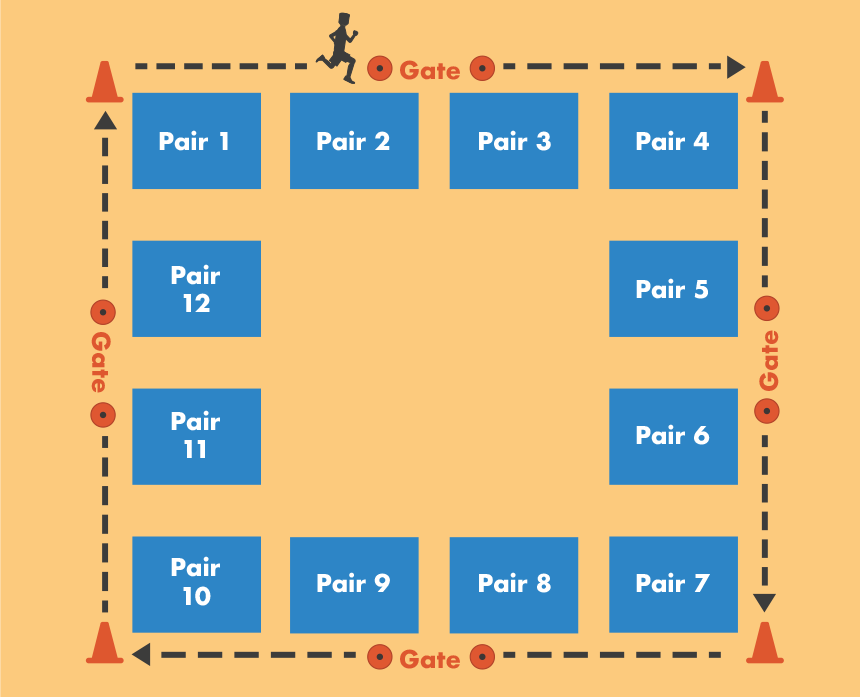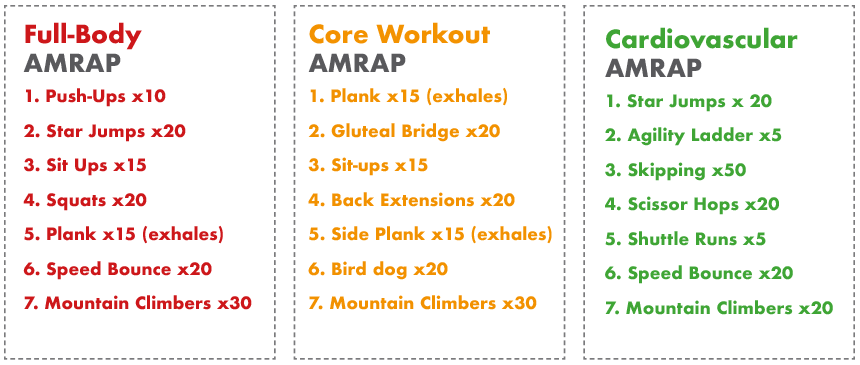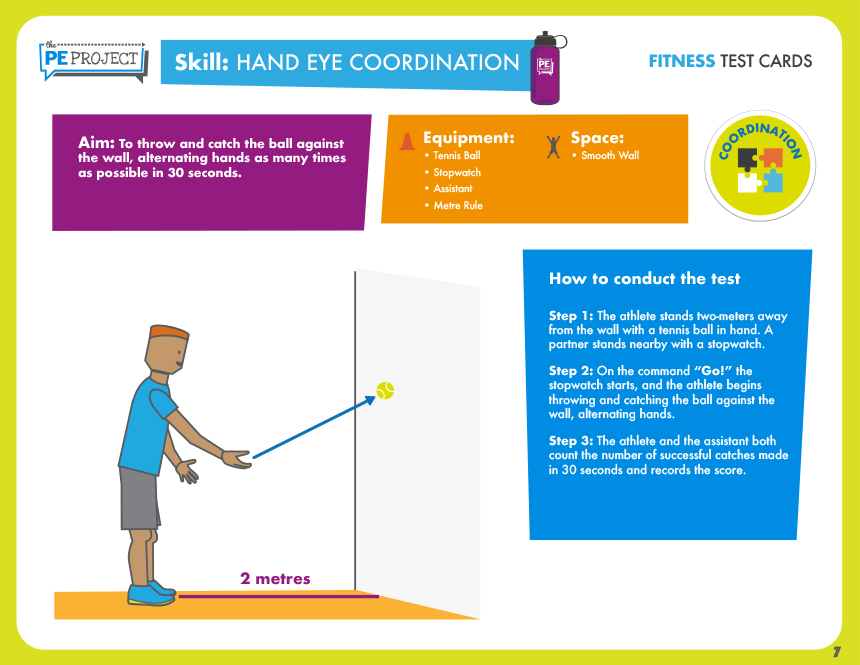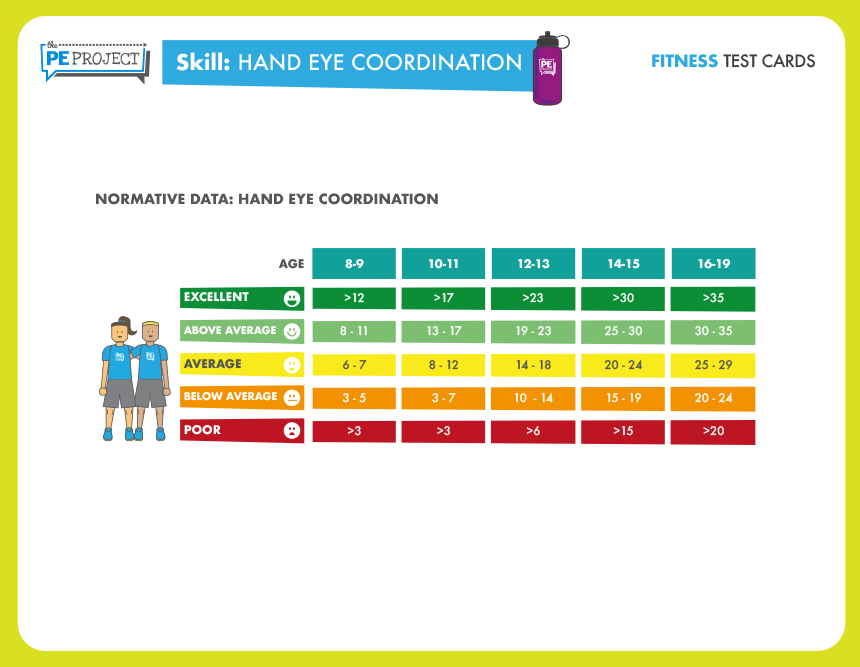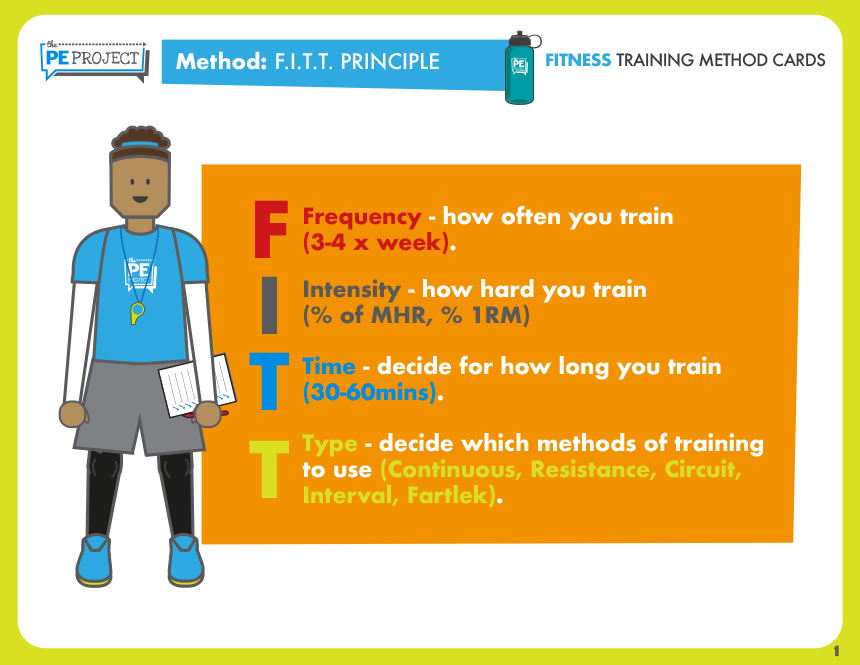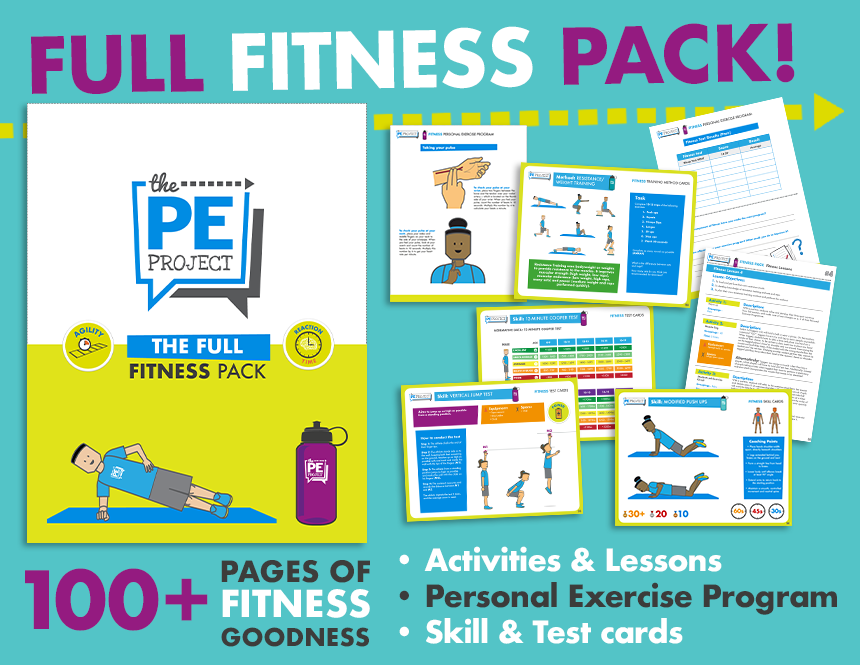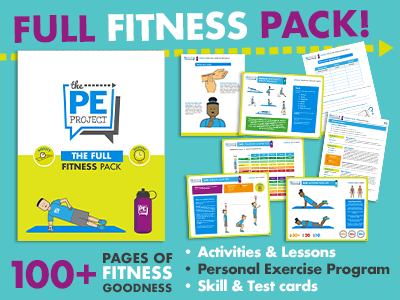When teaching Fitness in Physical Education lessons, it is helpful to have a range of activities, teaching models and styles in the toolbox to help ensure students make great progress. Fitness lessons can be delivered in a range of ways depending upon the age, group size, resources available and your level of knowledge of the game.
If teaching lower Elementary (Primary/KS1) you may want to opt for a range of fun games and challenges that are intermittent in nature which more closely replicates children's play. This could be tag games where when students are tagged they have to perform an exercise like star jumps until they are set free by a classmate. However, teaching Fundamental Movement Skills would be more age appropriate at this stage of their development and you can always drip-feed in health education principles into those lessons.
For upper Elementary (Primary/KS2) students can experience a range of games, activities, and short workout challenges with age-appropriate exercises. Exercises that wouldn't be age appropriate would be ones that they are unable to perform with good/safe technique e.g., a push-up may not be deemed appropriate for many younger students as they lack the strength to perform correctly. Nonetheless, most bodyweight exercises will be appropriate but should be closely monitored by the teacher. Once again encouraging students to work in pairs to observe and coach each other into good technique is a great way to emphasize quality technique.
Once students move into Middle-School (KS3) and High-School (KS4 & 5) this is where students can begin to experience increasingly more challenging exercise activities from cardiovascular challenges and workouts to even designing their own routine using exercise principles.
Below are a few Fitness activities and example skill cards with fitness principles that are from our ‘Full Fitness Pack’ that you can download today and use in your lessons.
Description: For the track - set up four cones around the corners of the gym, and two small cones on each side of the area to represent gates. For the stations – set up mats inside of the track (one mat per pair). Provide pupils with an order of exercises which they have to complete (8-12 exercises). Pupils take it in turns to perform the exercise while their partner completes laps of the gym (1-3 laps recommended) – runners must enter and exit the exercise area via the nearest gate. There are no specified number of reps for the exercises on the mats, as pupils must continue that exercise until their partner has completed their laps. For example, 1 performs Push ups, whilst 2 runs laps; then 2 performs Push ups, whilst 1 runs laps; 1 performs Squats, whilst 2 runs laps etc. If pupils complete all the designated exercises before the time expires, they start back at the first exercise and continue.
Teaching Points
- Keep a smooth and controlled movement
- Maintain a neutral spine
- Breath regularly
- Avoid locking joints
- Work at your own level
Questions
- What are the main teaching points for the Squat?
- Which exercise was the hardest to perform?
- Why do you think we should avoid locking our joints when exercising?
- Compare and comment on your own and partner’s technique. What were your strengths and weaknesses?
Description: Students work individually or in pairs with a mat each. Pupils can either plan a sequence of exercises (approximately 5-12) or the teacher can provide them with one. The aim of this workout is to complete As Many Rounds As Possible (AMRAP) within a designated time period e.g., 8-15 mins. This workout can be performed with minimal equipment and space and optimizes use of time.
Teaching Points
- Keep a smooth and controlled movement
- Maintain a neutral spine
- Breath regularly
- Avoid locking joints
- Work at your own level
Questions
- What does AMRAP stand for?
- What do you think are the benefits of this type of training?
- What kind of people is this training most suitable for? Unsuitable?
Skill Cards: When teaching Fitness it can be extremely useful for students to use skill cards to deepen their understanding of exercise techniques. For example, when trying to teach students how to squat they could use the above skill card to learn about the technique with a partner. Then they can take turns performing the exercise whilst their partner observes and gives feedback. This is an example of a 'Reciprocal Teaching Style' which you can learn more about in our 'Teaching Styles' article.
Skill Cards: When teaching Fitness, you can also use skill cards to help perform fitness tests. For example, the above skill card has two sides - on one side a diagram and description of how to conduct the test; then on the reverse a table with normative data where students can compare their results and set personal goals. Another good example of the 'Reciprocal Teaching Style' which you can learn more about in our 'Teaching Styles' article.
Another great thing about skill cards is that they can be used to pepper in teaching points and principles such as the above FITT principle. One simple way to use this in a circuit is to have these type of cards placed as a recover/rest station where student can take a short break a read the principle with a partner.
The Full Fitness Pack
Would you like to deliver high-quality health and fitness lessons in your PE class? If so, then this pack is for you! It has been developed by highly-qualified and experienced PE teachers for specialists and non-specialists alike who want to deliver fun, engaging fitness lessons where students can make exceptional progress.
In the Full Fitness Pack by the PE Project you will find:
- Lots of Fitness activities and games
- Exercise Cards
- Fitness Test Cards & Normative Data
- Lesson Plans
- Personal Exercise Program (for students to fill out)
- Non-doer sheets
- Plus lots of additional extras like questions, teaching recommendations, differentiation strategies.


